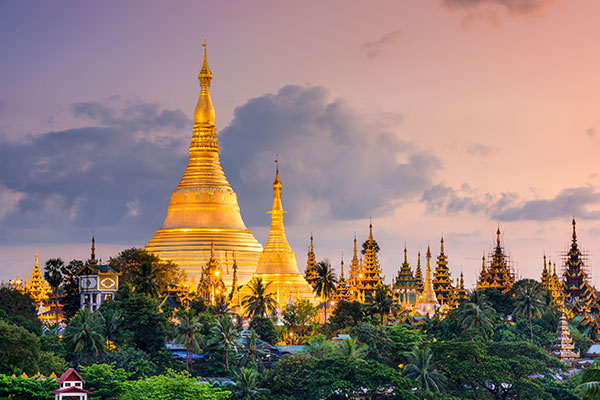
Myanmar Architecture

Myanmar (Burma) has long been renowned for its extraordinary religious monuments, palaces, and colonial-era buildings. The notion of Myanmar Architecture has attracted many experts and tourists who hold the big interest in the new land’s architecture. Due to the renewal theme in Myanmar culture, the majority of the capital cities here have been renewed. Some of the traditional forms cannot stand the test of time. Besides, some exceptional structures are well-preserved enough to feast the visitors’ eyes and indulge their architectural tastes.
What Are The Massive Exceptions In Myanmar Architecture?
- Buddhist-related sites
The foremost gigantic exception is burmese architecture is the Buddhist temples and pagodas. The religious constructions can be traced in every corner of the country that makes Myanmar “the land of a million pagodas”. People coming to Burma undoubtedly believe that the Burmese have the deep religious traditions as well as devotion. The country itself is full of the Buddhist pagodas, temples, and monasteries that make it the ideal Buddhist pilgrimage destination in the Southeast Asia.
As an illustration, Shwedagon Pagoda is the impressive golden monument to Buddhism that exceptionally remains its traditional architecture. Meanwhile, thousands of temples on the Bagan plains look breathtaking and decent in almost every village, street, or riverbank. The Myanmar’s pagoda is the highly sacred place that requires the visitors to take off their shoes before entering, always. People can use some different terms to reflect the Burmese pagoda like zedis, stupas, or payas; but whatever term is used, they refer to the mound-like constructions used to worship and house the Buddha relics.
The Buddhist-related sites in Burma are in semi hemispheric designs that are topped with the shark peaks. They stand for the Buddhist’s alms bowls and their sticks. What’s more, the pagodas or stupas in Myanmar are gold-gilded that creates the impressively eye-catching structures from the far distance. The four most significant pagodas are Yangon’s Shwedagon Pagoda, Mon State’s Kyaikhtiyo Paya, Mandalay’s Mahamuni Buddha Temple, and Bagan’s thousands of stupas and temples. Especially, the Burma’s oldest pagoda is Sule Zedi, the 2500-year-old Buddhist site situated in Yangon.
Monasteries are the other exceptions whose architecture is remained in Myanmar. The tourists can explore these religious sites to witness the conventional lives of the monks and nuns here via the pre-scheduled visit. Also, please don’t miss the royal palaces that pre-date the colonial era! The palaces were built from teak and gone through the violent history in Myanmar. You know can visit the reconstructed sites in Mandalay and Shwebo.
- The Colonial Buildings
Last but not least, the colonial-era building available in Myanmar will never disappoint every guest, even the most fastidious ones. You can feast the eyes with the impressive array of buildings from the colonial era in Yangon, the former capital of British-ruled Burma. These special buildings are the city’s identity.
Apart from the Buddhist-related sites, Myanmar is graced with many wonderful colonial buildings, the remnants of the government of British colonization. The two most important and famous examples of the colonial buildings are the Ministers’ Building (the spectacular edifice decorated with monumental wings) and The Strand (a Victorian-style hotel built in 1901). Both of the impressively colonial-era constructions are settled in Yangon.
Contact Us
Information
WhatsApp : 09 250197881
info@myanmarphotographytour.com,
winthandarandassociatestravels@gmail.com
Travel Tips
- Embassies In Myanmar
- Arrival & Departure Procedure
- Myanmar Embassies Abroad
- Do & Don't
- Gazetted Holidays In Myanmar
- Life Style In Myanmar
- General information about Myanmar visa
- Travel Tips
- Our Services
- Naga History
We specialize in Myanmar also known as Burma because with our roots and our years (22 years travel industry )of experience.
